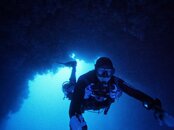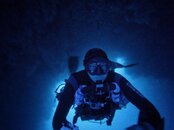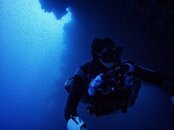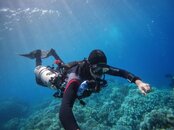Kay Dee
Contributor
Seeing this old thread has been brought back to life, I'd like to 'comment' on the above.For the record, I know a number of serious tech divers who descend that fast or faster on a regular basis and mostly they come up to their "off-gassing point" or around half their max depth or somewhere near their first deco stop (totally depends on the person and the dive) that fast, too. For descents, pointing a DPV at the bottom and hitting the trigger seems not at all unusual among deep (>200ft/60m) wreck divers.
First, re the now underlined, MEA CULPA!
When we were diving USS Atlanta (Guadalcanal, Solomon Islands) in the 90's, we would reach 120m / 390ft in two minutes, or just over on Aquazepp scooters. For ascent we'd point our scooter up, hit the trigger and only take it off at out first deco stop at 66m / 216ft (where we would switch to our as our first deco gas which was ........air!) The name of the game back then was to get out of the deep area and off the bottom mix (of helium) as fast as possible, and we certainly did our best to accomplish that.

So yes it was done, have done it, but in hindsight I certainly would not do or recommend that kind of ascent now (and choose a better deco gas for 66m also).









